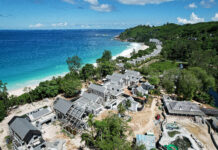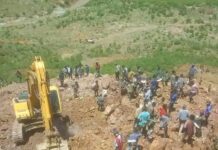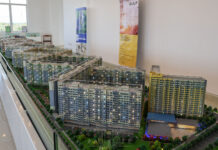Next stop:
Sao Paulo
When the violence in Congo became unbearable Afonso ![]() decided it was time to pack his bags. He contacted a group of smugglers, and escaped Kinshasa on a cargo ship with a handful of other migrants. As the boat left Africa it headed not north to Europe but due West, to Brazil.
decided it was time to pack his bags. He contacted a group of smugglers, and escaped Kinshasa on a cargo ship with a handful of other migrants. As the boat left Africa it headed not north to Europe but due West, to Brazil.
He worked on the ship to help pay his passage and two weeks later, was dropped in the Brazilian port city of Santos, some 55 kms from Sao Paulo.
Afonso is unusual among the transcontinental migrants landing in the Americas. Most do not choose to travel across the seas, opting instead for a flight package that sees them safely deposited in some of the continents biggest cities.
But he is among a wave of migrants that, for many different reasons ![]() , instead of taking the perilous journey north over the Sahara and across the Mediterranean, are choosing instead to try a new route to Latin America. Soror Eva Souza, the director of the Scalabrinian Mission in Sao Paulo
, instead of taking the perilous journey north over the Sahara and across the Mediterranean, are choosing instead to try a new route to Latin America. Soror Eva Souza, the director of the Scalabrinian Mission in Sao Paulo ![]() , a charity that helps refugees and foreign migrants, says that in recent years they have helped people from Angola, Congo, Guinea, Morocco, Cambodia, and Egypt, as well as Nigeria, Togo, Tunisia, and Syria.
, a charity that helps refugees and foreign migrants, says that in recent years they have helped people from Angola, Congo, Guinea, Morocco, Cambodia, and Egypt, as well as Nigeria, Togo, Tunisia, and Syria.
With an open and broad legal framework allied with a refugee policy oriented towards south-to-south cooperation, former president Lula da Silva’s government started work in 2003 to make Brazil a regional leader in the matter of displaced people and set the country up as an internationally recognized actor in this context.
That led to some specific waves of migration: of Palestinians in 2007, of Syrians in 2014, and Haitians after the country’s devastating earthquake. But it has also led to a notable uptick in the numbers of African, Asian and Middle Eastern migrants and asylum seekers arriving.
According to official statistics in 2010 Brazil received just 966 asylum requests but in just five years that number had shot up to 28,670 – an increase of 2,868 per cent. The nationalities most represented in the numbers? Migrants from Haiti, Senegal, Syria, Bangladesh, Nigeria, Angola, Congo and Ghana, many of whom would have travelled thousands and thousands of miles to reach Brazil.
Not all the claims were accepted – in fact of the 74,794 asylum requests received since 2010, Brazil had only recognized 8,863 by 2016 – but according to civil society organisations working on this issue, many of those who have their request denied end up staying irregularly.
Of course not all migrants arriving in Brazil claim asylum – those using the country as a launch pad to go north would not have a strong motivation to do, for example – and according to the ministry of Tourism, in 2015 110,983 African travellers came to the country, mostly from South Africa, Angola, Cape Verde, Morocco, Tunisia and Nigeria.
According to official statistics in 2010 Brazil received just 966 asylum requests but in just five years that number had shot up to 28,670 – an increase of 2,868 per cent.
Although the vast majority flew into Sao Paulo, official statistics show 1,366 people from the African continent crossed into Brazil by land (mostly through Paraná on the southern border and through the great northern border states of Amapa, Roraima, Amazonas and Acre), while 125 arrived by sea.
An important factor in this new pattern of migration was the turn-of-the-century view of Brazil as an emerging economic powerhouse: building ahead of the 2010 World Cup and the 2016 Olympic Games and the financial optimism brought by former presidents Lula and Dilma Rousseff made it an interesting proposition for those willing to try life elsewhere.
And if Brazil itself was becoming a draw, there was nowhere more attractive than Sao Paulo: a megalopolis of more than 20 million people, Brazil’s financial capital and one of the richest cities in the world, it became a major destination for local and international migrants. In fact, government statistics show that as many as 45 per cent of the city’s population are migrants.
Although the country’s economic outlook has deteriorated since then – with a financial crisis since 2015 – few migrants mentioned this as a push factor to leave. Many say that even in a downturn they are better off in the Americas than they were back home.
Evidence of these more recent migrations is everywhere. Lalingé ![]() , a Senegalese restaurant in the bustling Centro neighbourhood, is a place where migrants from all around the African continent gather to talk, do business, exchange the latest news and, of course, eat together.
, a Senegalese restaurant in the bustling Centro neighbourhood, is a place where migrants from all around the African continent gather to talk, do business, exchange the latest news and, of course, eat together.
Mamadou from Mali makes his living selling food in front of the Guaianazes metro station in Sao Paulo, Brazil, on 05 July of 2017. He learned how to cook traditional Brazilian dishes while working in an improvised kiosk after coming to Brazil 5 years ago – now he owns his own. His wife and son are still in Mali. (Photo by Marcelo Pereira).
Abu, 37, a Senegalese refugee, sells African wax-prints in the surroundings of Republica Square in Sao Paulo, Brazil, on 04 July of 2017. (Photo by Marcelo Pereira)
“Here I can at least walk free”
Not far away, in República Square, during the day many Senegalese migrants work as street vendors, while at night the square turns into a party destination for the community, where they bring sound systems and group together to sing and dance traditional African songs in Wolof, and talk about the community.
Carmem Silva, who leads the Frente de Luta por Moradia, a civil society organization helping homeless people in Sao Paulo, says migrants and asylum seekers make up a significant proportion of the people seeking their help. She estimates that around 20 per cent of the people they support come to Brazil thinking about moving elsewhere – mainly to the US. But the majority wants to stay in Brazil.
Fitah ![]() , a 32-year-old Somalian refugee, was among those hoping to use Brazil as a stepping stone to head north to the United States. He landed in Sao Paulo after paying smugglers in Johannesburg $4,000 USD for fake papers. But the only “options” he was given by the gang who helped him were based on his gender and his ability to pay: he was told he had to chose between Brazil or Turkey, as prices vary according to gender, age and destination. Deluded by US President Trump’s attempt to impose a travel ban on migrants from Somalia and other countries, he now just wants to stay in Brazil. “Here I can at least walk free”, he says.
, a 32-year-old Somalian refugee, was among those hoping to use Brazil as a stepping stone to head north to the United States. He landed in Sao Paulo after paying smugglers in Johannesburg $4,000 USD for fake papers. But the only “options” he was given by the gang who helped him were based on his gender and his ability to pay: he was told he had to chose between Brazil or Turkey, as prices vary according to gender, age and destination. Deluded by US President Trump’s attempt to impose a travel ban on migrants from Somalia and other countries, he now just wants to stay in Brazil. “Here I can at least walk free”, he says.
Corruption
en route
Those coming from Africa usually travel by plane and enter Brazil legally without needing help from coyotes, thanks to Brazil’s open migration legislation. However, the route is not without its own problems, and many migrants hire ‘agencies’ in their home countries that pledge to “facilitate the process”. For some, getting together the necessary documents and an agent who can arrange for a place to stay can cost thousands of dollars.
A source in the Federal Police that spoke to us claims that bulk entries of migrants – especially from Africa – are agreed upon with corrupt border officials who hold onto hundreds of passports and during quiet night shifts stamp piles of documents for extra cash.
Another way migrants are extorted, he claims, is when Customs employees don’t stamp the migrants passports but instead write down the address the new arrivals declare in the documents they have to submit upon landing. Months later, they knock on their doors and ask for money, threatening to report them to the authorities if they refuse.
But corruption can also begin at home. In 2010, an Angolan diplomat said that a significant number of identity documents requests made at their Embassy in Kinshasa, Congo, were actually made by Congolese migrants posing as Angolans. One Angolan migrant, “H” ![]() , who currently lives in a run-down Sao Paulo neighbourhood just beside a “boca de fumo” – an open drug dealing spot – also said many Angolan migrants bribe border officials for documents. As in other places, the migration often starts locally: those running away from the security crisis in Congo for example, first go to Angola before deciding to cross the Atlantic.
, who currently lives in a run-down Sao Paulo neighbourhood just beside a “boca de fumo” – an open drug dealing spot – also said many Angolan migrants bribe border officials for documents. As in other places, the migration often starts locally: those running away from the security crisis in Congo for example, first go to Angola before deciding to cross the Atlantic.
African migrants pray during a service at the “World of Fire Ministry” in Guaianases, a Evangelical Church managed by refugees in Guaianazes neighborhood in Sao Paulo, Brazil, on 05 July of 2017. Pastor Charles told us his ceremonies are often frequented by Nigerian and Congolese migrants – Brazilians step in rarely. (Photo by Marcelo Pereira)
Mohamed Ali, 40, from Morocco, lives in a refugee center of the Scalabrinian Mission in Sao Paulo, Brazil, on 05 July of 2017. Ali is searching for a job to start his life in Brazil. (Photo by Marcelo Pereira)
An African refugee prays during a service at an Evangelical church managed by refugees in Guaianazes neighborhood in Sao Paulo, Brazil, on 05 July of 2017. Pastor Charles told us his ceremonies are often frequented by Nigerian and Congolese migrants – Brazilians step in rarely. (Photo by Marcelo Pereira)
Integration,
racism and
segregation
For those that decide to stay in Brazil, asylum seekers and civil society leaders say that although the Brazilian State traditionally has had a receptive attitude towards refugees and its legal framework is modern and permissive, there is a huge lack of planning regarding how to integrate people once they arrive. Integration is not easy and many migrants complain about racism.
Most of the African migrants we met in Sao Paulo were still waiting for permanent documents and even though by law they are allowed to work, almost all of them are working informally selling goods on the streets, as in the case of Abu ![]() , who sells Senegalese wax fabric in an improvised kiosk near República Square, and Jorge
, who sells Senegalese wax fabric in an improvised kiosk near República Square, and Jorge ![]() from Guinea-Bissau.
from Guinea-Bissau.
There are growing concerns about the labour exploitation of refugees in illegal sewing facilities, in particular those led by the Bolivian mafia in the east of the city. There is a large counterfeit market in Sao Paulo ![]() and that includes clothing sewed locally by people like Ibrahim
and that includes clothing sewed locally by people like Ibrahim ![]() , a migrant from Senegal, who works in an improvised atelier in the Centro.
, a migrant from Senegal, who works in an improvised atelier in the Centro.
According to a report by the government of Sao Paulo, 24.7 per cent of the refugees helped by the local Reference Center for Migrant Assistance (CRAI) have a higher degree but due to lack of institutional recognition of their qualifications, many end up in unqualified jobs. Kingson (link to vignette), for example, is a 38-year-old agricultural engineer from Lagos who now cleans the toilets of Guainases train station in the extreme east of Sao Paulo. Others are also drawn into the illicit economy and drug dealing in Rua Guaianazes ![]() and around the Centro neighbourhoods.
and around the Centro neighbourhoods.
But many of those who stay have started constructing their own spaces in this giant city by establishing restaurants, mosques and churches that replicate the places they used to visit back home. In the words of Pastor Charles, the founder of the World of Fire Ministry in Guaianases, “migrants love to eat their home country food, and the same goes for religion”.
Those that decide to stay put are, slowly, themselves becoming “paulistanos”.
“In 40 years, who is getting born now, will be able to manage this country. With education, respect and knowledge. The richness you have, nobody has. We must be patriotic and love Brazil. I love Brazil more than many Brazilians. I’m Brazilian until the day I come back to my country”, said Abu the day we met in the surroundings of República Square.
“migrants love to eat their home country food, and the same goes for religion”
Civil Society Organization Frente de Luta pela Moradia (FLM) supports homeless people in Sao Paulo including African migrants, on 04 July of 2017. (Photo by Marcelo Pereira)
The lobby of the building used by Civil society organization Frente de Lua pela Moradia, which supports homeless people in Sao Paolo. (Photo by Marcelo Pereira)
Senegalese restaurant Lalinge became a meeting point for refugees in Sao Paulo, Brazil, on 04 July of 2017. (Photo by Marcelo Pereira)








